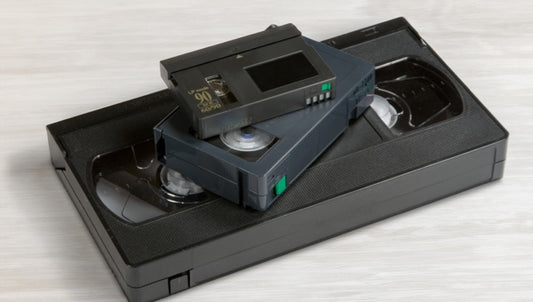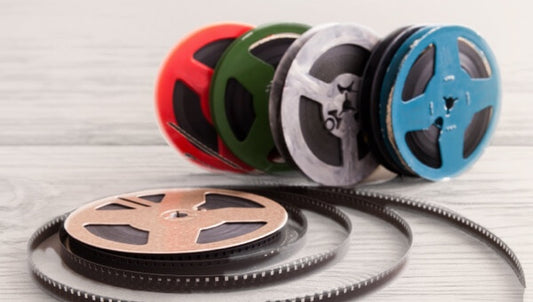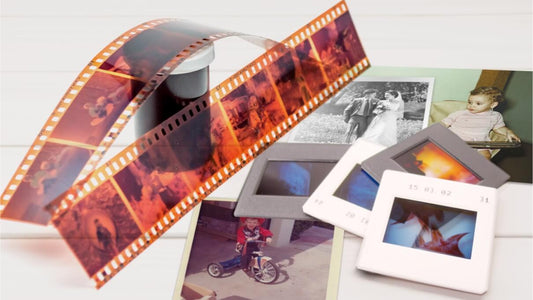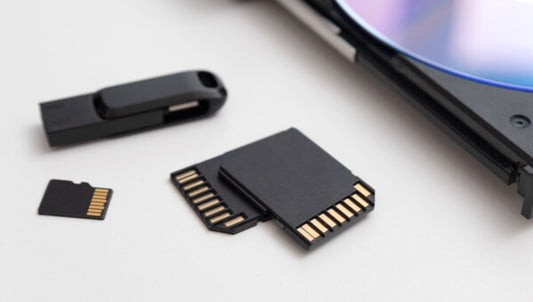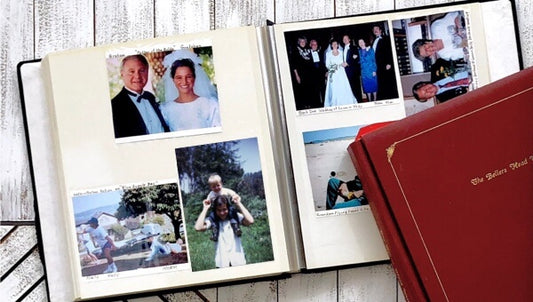Protect your valuable memories: upgrade their environment
Photos and videos are among the most important keepsakes many of us have. They are our connections to our past, a link back to other generations and what’s made us who we are. They are very often irreplaceable.
And yet, many memories are sitting in boxes, in environments that are making them degrade more quickly than they otherwise would. Attic, garages, unfinished basement top the list of usual suspects. But anywhere that’s dirty, dusty, damp, has extreme temperature changes or direct sunlight accelerates damage to photos, video tapes, CDs, and DVDs.
Sound familiar? If so, moving your memories is one of the quickest and easiest steps you can take to preserving them.
Choosing your new storage location
Both humans and memory media like mild temperatures and protection from the elements. If is a place you as a human would find comfortable, it’s probably a good spot to store your memories.
Bonus point if your new storage spot really is somewhere you want to, and can, spend time going through your memories. At the very least, finding somewhere that’s easy for you to access them make it easy for you as you gather them together for true long-term preservation.
The impact of environment on your media
Photos and Film
Photographs and film are some of the most connective, important memories we have. But heat and humidity—and other issues—pose problems for color prints, negatives, and slides. The specifics vary a bit depending on the exact media—and the time period in which it was created, and the process used.
Sunlight
Sunlight fades virtually everything, and photo and film media are very sensitive. Even a little bit each day will fade your images—and it doesn’t even have to be direct sunlight.
For framed photos, keeping them out of direct sunlight, putting them in UV-blocking frame (a.k.a. “museum glass”) is a good step. For memories you store, while staying out of light is good—a damp and/or warm space is not. Many closets aren’t ideal because of this.
Chemicals
From those used to create images and films, to those used in common storage methods, a myriad of chemicals wreak havoc on photographs and film.
The dyes used in the color processes render images less stable than traditional black-and-white processing. As a result, black-and-white images from the 1920s are more likely to remain intact than color images from later in the 20th century. Inkjet-printed prints have a very short life expectancy of months versus years.
Even chemicals involved in using and storing photos can degrade them. Common adhesive tape and the self-adhesive pages of photo books can stain prints. So frustrating, right? If you’re printing a photo today, and don’t use acid-free paper, it can easily and rather quickly, develop a yellowish tint.
Air
It seems cruel, but even just exposure to air will cause photos and, to a lesser extent, film, to fade over time. There isn’t much to be done about this, of course—another reason why digitizing is so important.
Humidity
Do you have old photos with brown, streaky spots? Humidity and dampness are to blame—and the basements and similar spaces that go along with them.
Videotapes
There are several reasons why your treasured content on videotapes and other magnetic media should be quickly transferred to a current format. First off, their recording technologies become obsolete quickly—as well as the playback technologies. Case in point, most of us have long since swapped out our VCR. In addition, videotape formats themselves are unstable, due to the nature of their base materials.
What happens to tapes as they age?
The binder, or glue, that holds the magnetic particles to their polyester bases breaks down and, in some cases, the magnetic material falls off the base, leaving behind a clear backing and dust. This type of decay is accelerated by humid, hot climates, which encourage harmful bacteria. Another way in which tapes deteriorate is that their magnetization can also destabilize, reducing picture contrast, hue, sound clarity, and overall readability.
As the shelf life is only 10–20 years, digitization is the only way to preserve video tapes.
CDs and DVDs
CDs and DVDs look and feel so solid, right? And while they are more durable than some other forms of media, the same environmental factors that eat away at other media do the same to CDs and DVDs.
Conventional CDs and DVDs have finite lifetime expectancies of as few as 5 years, or as many as 25 years. Similar to previously mentioned formats, these media types contain organic dyes that naturally degrade over time; silver oxidation is the primary factor that limits the lifespan of standard CD and DVD media. One exception to the rule is archival DVDs, which may have a longer lifespan of 100 years or more. Despite having an above-average lifespan, the technologies that write and play them are becoming increasingly hard to find and maintain.
Depending on your environment, humidity, mold and dust, exposure to light, and extreme temperatures can all hasten the deterioration of your family’s favorite movie moments.
The sure way to make your memories last a lifetime: digitize them
Digitizing preserves your memories by makes digital files of them that work on today’s cellphones, tables, computers, and other modern technology.
In addition to preserving your memories, digitizing makes them easy to enjoy and share. While preservation is what often brings customers to us, customers tell us that getting the chance to really share and enjoy their memories is an unexpected delight. Watch parties, custom photo gifts, memory walls, and digital photos frames are just a few of the ways to do just that. This is particularly true of video formats they’ve long lost the ability to play. Digitizing also lets you back up your memories just as you do your other important files—on the cloud, on drives, in multiple places—for peace of mind.
Getting digital files of your memories is easy. Very. See how.





